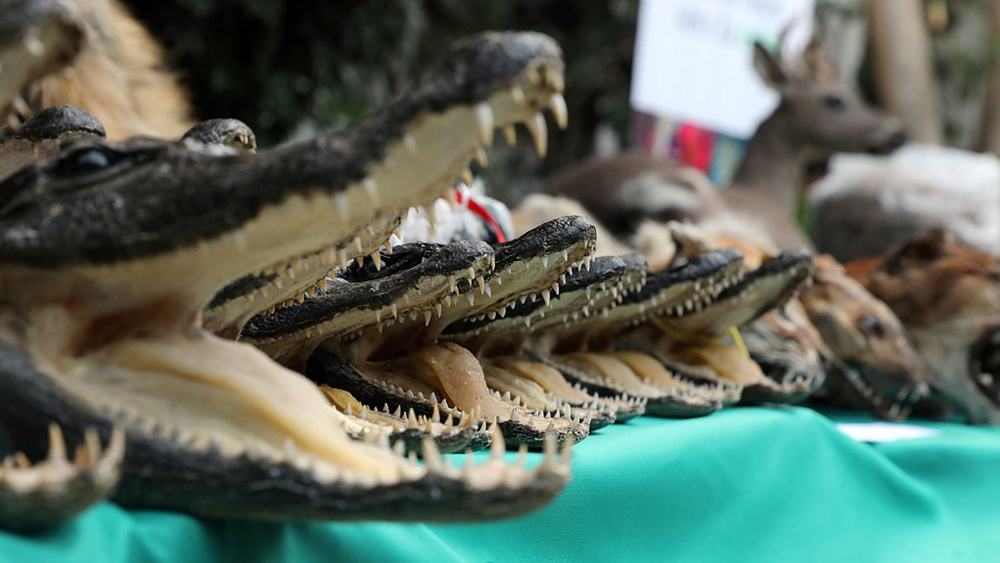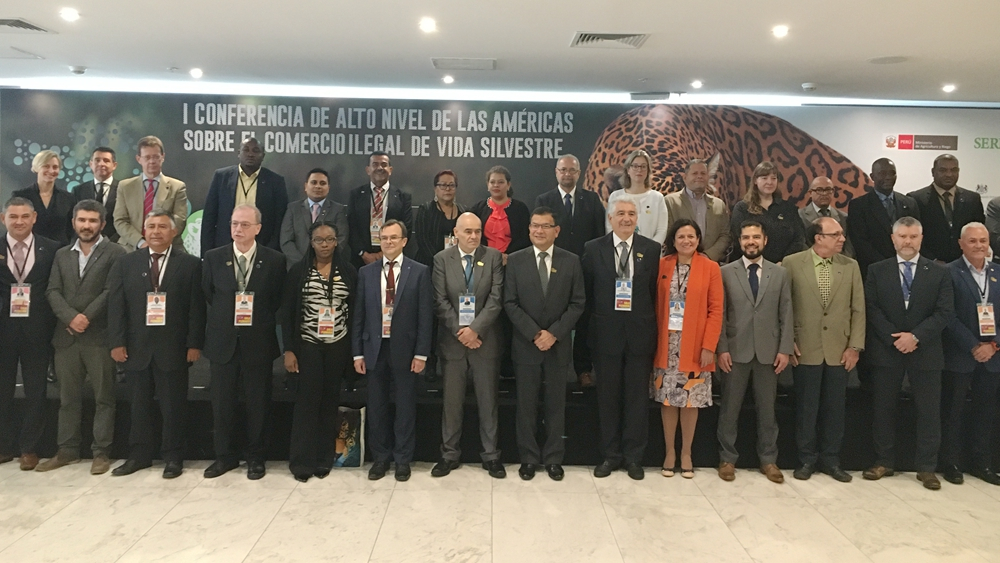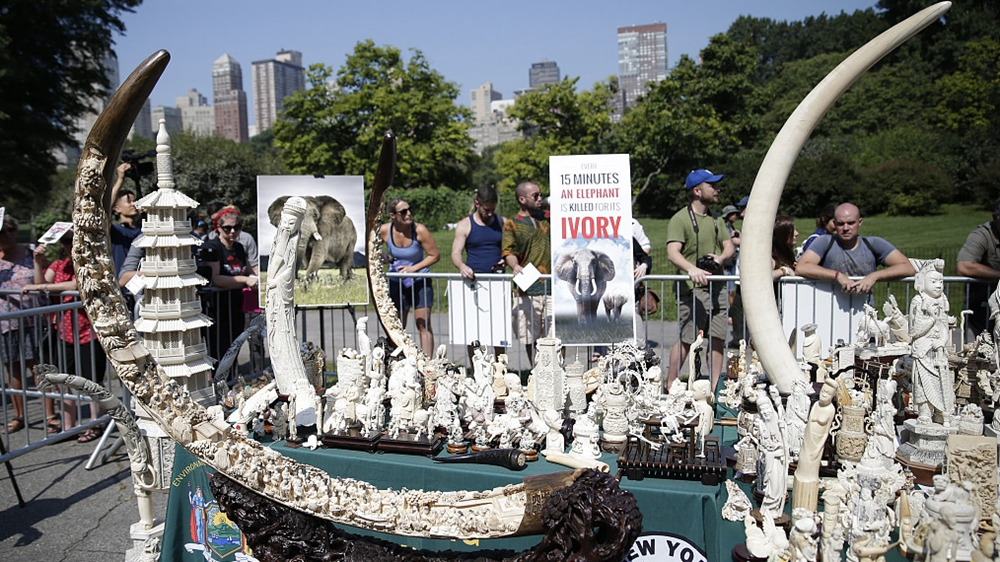
Peruvian police show confiscated stuffed crocodile heads used by shamans in Lima, July 19, 2018. /VCG Photo
Peruvian police show confiscated stuffed crocodile heads used by shamans in Lima, July 19, 2018. /VCG Photo
The jaguar – the Americas' largest cat – is the emblem of a new initiative to combat the illegal trade of wild animals in South America. The iconic but threatened predator has a key role in the ecosystem and has tremendous cultural significance for the peoples of the Americas.
Little attention has been focused on the region until now as the Peruvian capital Lima hosted the first ever high-level conference on the illegal wildlife trade.
Wildlife trafficking is one of the world's most lucrative organized crimes which the global police force network Interpol estimates has an annual value of around 20 billion U.S. dollars each year.
Latin America has 40 percent of the planet's biodiversity, which is the largest number of plant and animal species anywhere. But this is its first ever conference to combat the illegal wildlife trade and the host country Peru wants to lead the way.

The first ever high-level conference on the illegal wildlife trade is held in Lima. /CGTN Photo
The first ever high-level conference on the illegal wildlife trade is held in Lima. /CGTN Photo
Wildlife trafficking is on the rise but so too are efforts to fight it, says Luis Alberto Gonzales-Zunig, the head of Peru's forestry and wildlife service.
"We aspire to be a leader in the region. We aspire to contribute with our experience in the fight against this crime, and, of course, we aspire to learn from other countries in the region and the world," he said.
Wildlife trafficking is the fourth most lucrative criminal enterprise after drugs, guns, and human trafficking.
But the international police force Interpol says it's often not taken seriously enough in source countries.
Salvador Ortega, Interpol's head of Forest Crime for Latin America, said: "Every country has a different judicial system which often obstructs or makes difficult the interchange of operative information which is necessary to combat what is fundamentally a transnational crime."

Illegal ivory trinkets, tusks and creations are on display along with a ton of ivory before being destroyed as an ode to end the illegal trafficking and brutal mistreatment of elephants in Central Park, New York City, August 3, 2017. /VCG Photo
Illegal ivory trinkets, tusks and creations are on display along with a ton of ivory before being destroyed as an ode to end the illegal trafficking and brutal mistreatment of elephants in Central Park, New York City, August 3, 2017. /VCG Photo
Poverty often drives the sale of live wild animals from countries like Peru. It's estimated that nine out of ten animals die in transit.
In this illicit trade, East Asia is one of the major destinations for wildlife parts.
China has increased its enforcement against the crime, says Li Lishu, China Program Manager for the Wildlife Conservation Society.
"In recent years, China's government is taking serious actions to combat the illegal wildlife trade and wildlife crime and we have seen enforcement agencies have much higher willingness to invest enforcement resources."
Corruption in all its forms is the biggest obstacle to breaking the trafficking chain.
But the 27 mostly Latin American and Caribbean countries at the conference vowed to share intelligence and enforcement and take the crime more seriously.
Attendees agreed that education is also crucial to ensure future generations leave wild animals where they belong, in the wild.